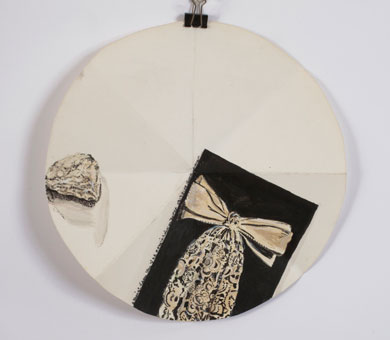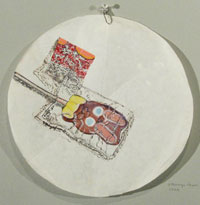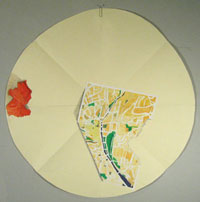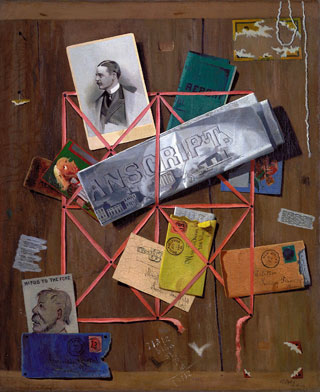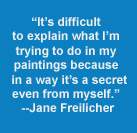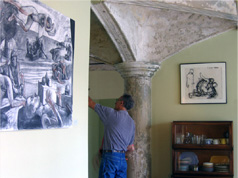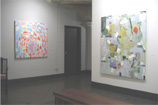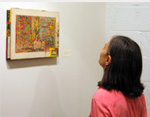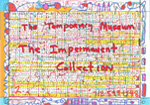
|
|
|
|||||||||
| ||||||||||
Bruce finds the usual conventions of picture making—the rectangular format and the single orientation—imprisoning. While remaining a painter and staying painterly, his work takes many eclectic turns including multiple kinds of sizes, surfaces and arrangements. The paper is folded and the piece doesn’t hang flat on the wall—it aspires to escape being art and to become an object out in the real world. A hint of trompe-l’oeil abets this effort. |
||||||||||
|
||||||||||
|
||||||||||
In Two Things from Quimper, the map is trompe-l’oeil and the diagonal folds are real. In the V and A, the black square behind the lace bow also appears to be cut out like a snow flake. Another way that his work alludes to the trompe-l’oeil tradition is in depicting ordinary objects in a shallow space. (Portraying deep space only works from the full frontal view.) Both strategies enhance the effect, as seen in the work of John Peto: |
||||||||||
|
||||||||||
| RACK PICTURE FOR WILLIAM MALCOLM BUNN, 1882, 24”x20”, oil on canvas | ||||||||||
The trompe-l’oeil does not attempt to confuse itself with the real. Fully aware of play and artifice, it produces a simulacrum by mimicking the third dimension, questioning the reality of the third dimension, and by mimicking and surpassing the effect of the real, radically questioning the principle of reality. Begging to differ with Baudrillard, this passage seems to contradict itself. If “trompe-l’oeil doesn’t attempt to confuse itself with reality” and is “fully aware of play and artifice,” how does it radically question the principle of reality? It seems to me that trompe-l’oeil shows the limited means by which we perceive reality and I have always found it very pleasurable, but in the course of my research have realized that many people don’t, Baudrillard and Socrates being notable examples. Some people don’t like to be fooled. |
||||||||||
| To see more of Bruce Stiglich's work on his website | ||||||||||
| Forward to the next painting in the collection | ||||||||||
| Back to the My Collection home page | ||||||||||
